Arizona Lizards: 10 Species You Can Find at the Arboretum
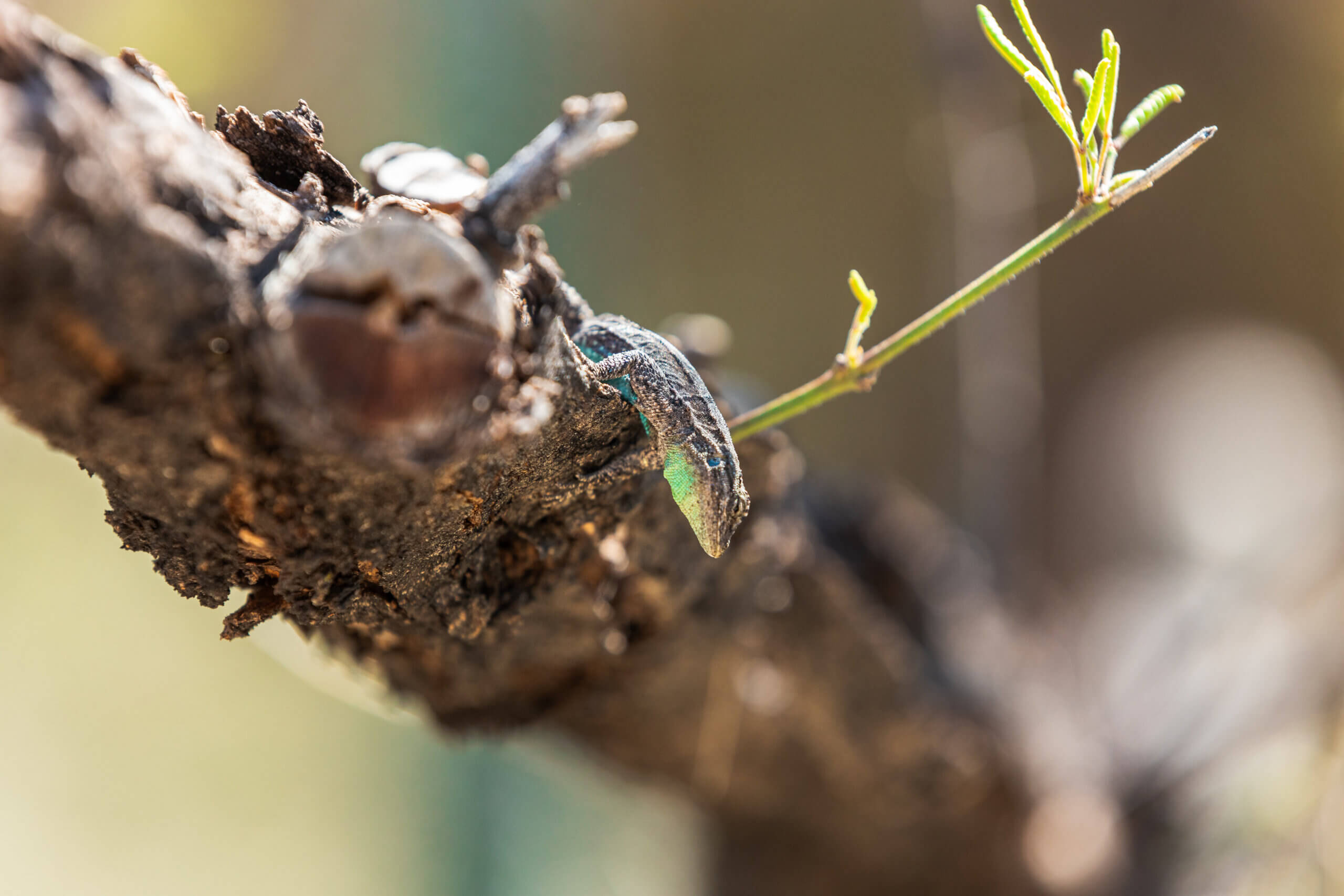
Boyce Thompson Arboretum offers a variety of desert habitats that provide ideal conditions for lizards to thrive. The Arboretum’s diverse landscape includes rocky outcrops, sandy washes, and lush riparian areas.
The Arboretum’s botanical garden features many desert plants, including cacti, succulents, and native shrubs. These provide food, shelter, and basking opportunities for lizards. Visitors may see lizards sunbathing on rocks, moving quickly through plants, or blending into their surroundings with their camouflage.
The natural setting of the Arboretum provides a unique opportunity to observe these fascinating creatures in their native habitat. In this blog post, we’ll explore ten remarkable lizards that call Boyce Thompson Arboretum home. We’ll learn about their appearance, habitats, behaviors, and survival strategies.
- Gila Monster (Heloderma suspectum)
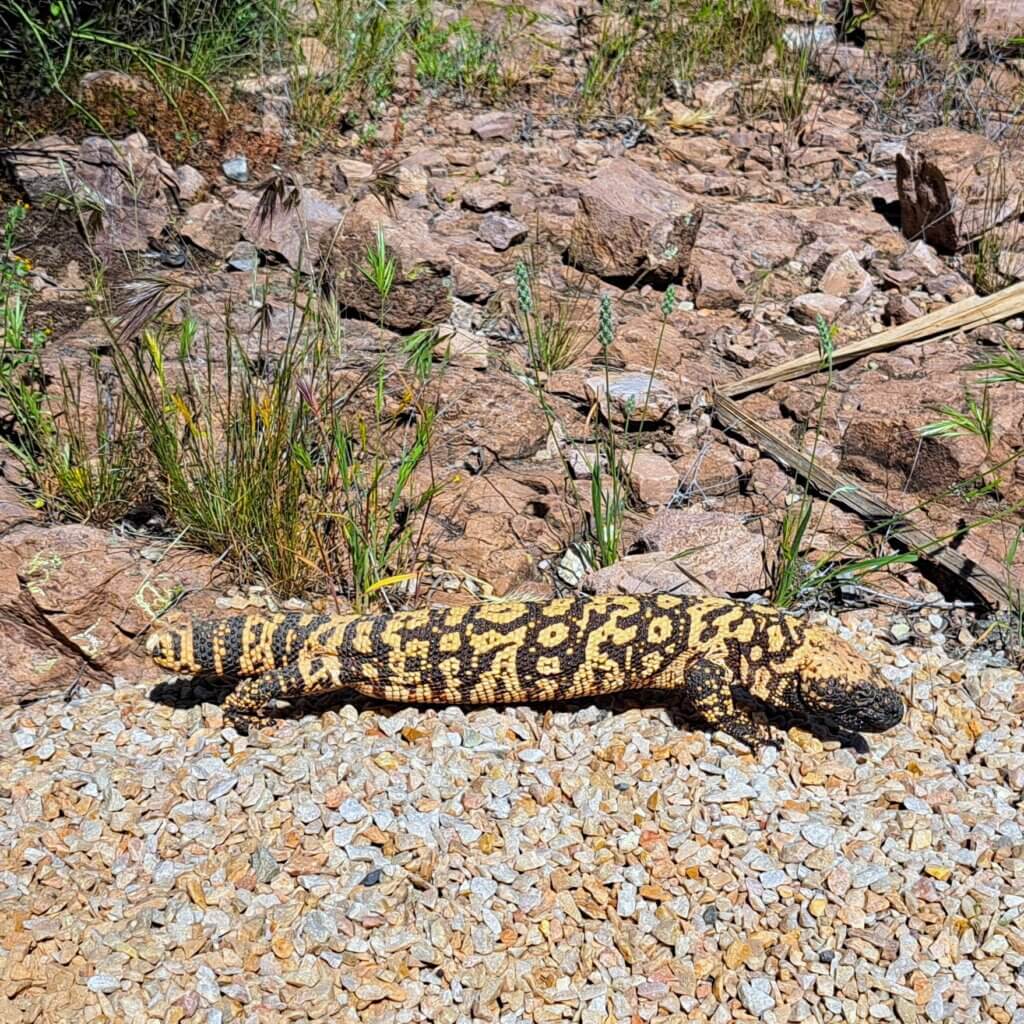
The Gila Monster is one of the most iconic lizards of the Sonoran Desert. It has bright orange and black bead-like scales. These lizards prefer habitats with hiding places, like rocky areas and desert scrublands.
Gila Monsters are one of only two venomous lizard species in the world. They possess a potent venom they use for hunting. Their diet consists mainly of eggs, small mammals, and nestlings. Gila Monsters have specialized jaws and teeth for crushing through the tough shells of their prey.
- Zebra-tailed Lizard (Callisaurus draconoides)
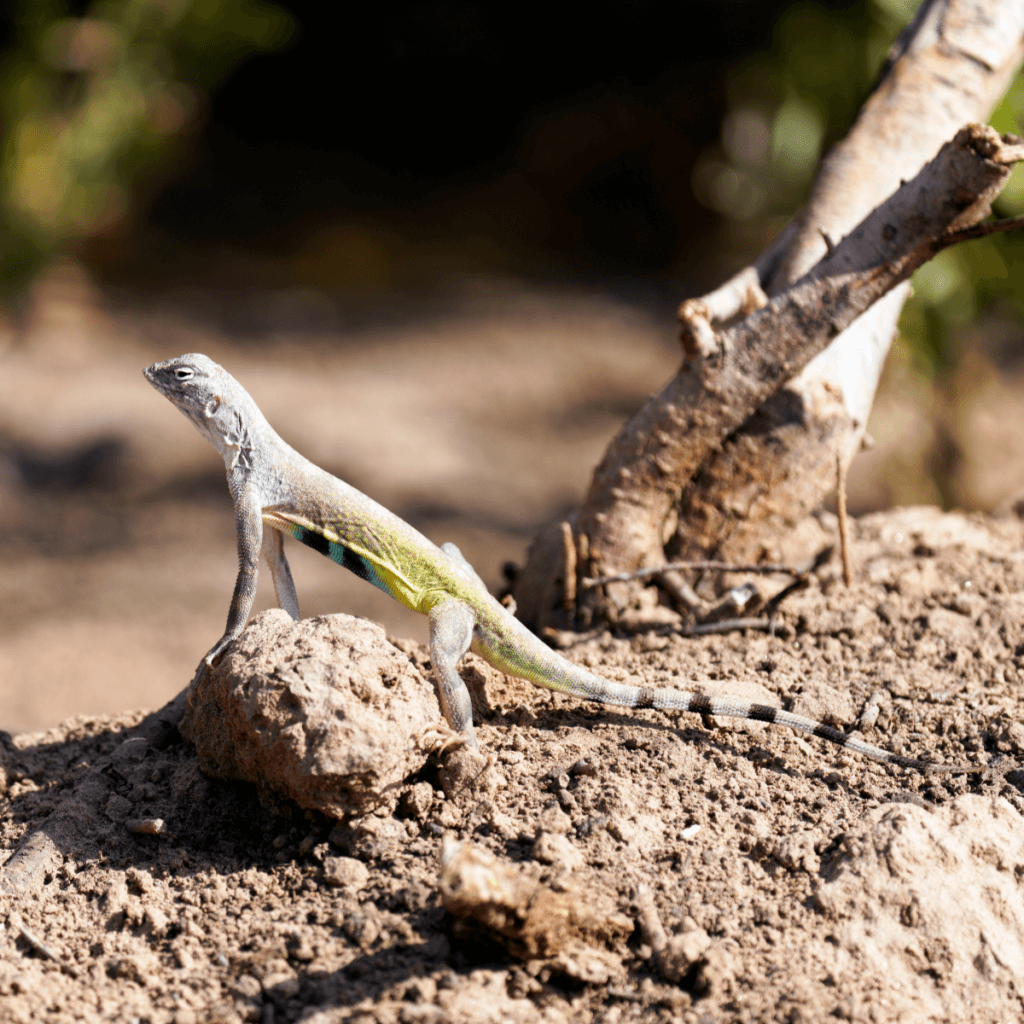
True to their name, Zebra-tailed Lizards have distinctive black and white stripes on their tails. They prefer sandy desert flats with sparse vegetation. These lizards are incredibly fast and can run up to 18 miles per hour.
They mainly eat insects, especially ants and beetles. Zebra-tailed Lizards have long, slender bodies and powerful hind legs, which help them move quickly across the desert terrain.
- Greater Earless Lizard (Cophosaurus texanus)

As their name suggests, Greater Earless Lizards lack external ear openings. They live in desert grasslands and sandy washes. These lizards communicate by quickly bobbing their heads and doing push-ups, especially when they’re defending their territory.
They eat insects, spiders, and small arthropods. Greater Earless Lizards have excellent camouflage, blending seamlessly with their surroundings to avoid being seen by predators.
- Western Banded Gecko (Coleonyx variegatus)

Banded Geckos are nocturnal and have big eyes, padded feet, and unique light and dark bands on their bodies. They’re often seen in rocky areas, under debris, and in rock crevices. These geckos make chirping sounds, especially when courting or defending their territory.
They eat insects and small invertebrates. Their sticky toe pads help them climb up vertical surfaces, which helps them hunt and get away from predators.
- Side-blotched Lizard (Uta stansburiana)
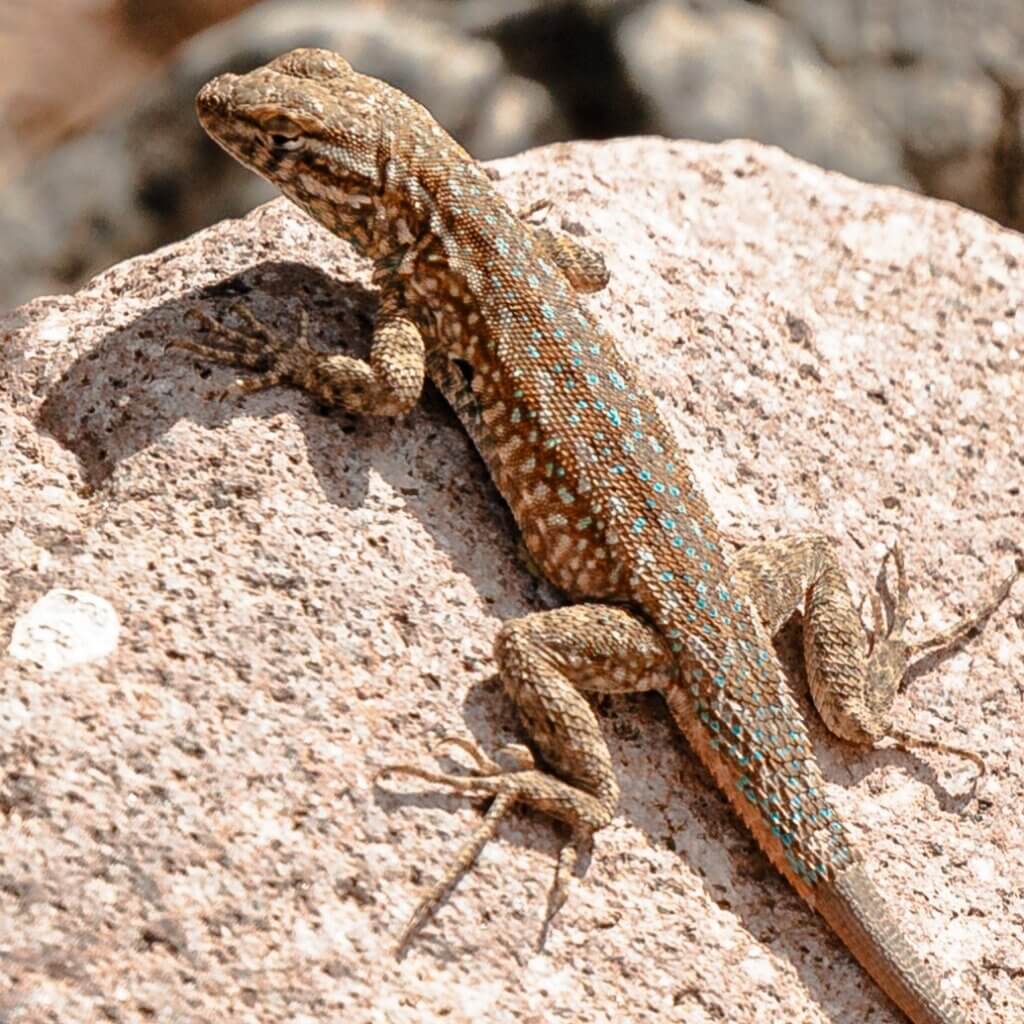
Side-blotched Lizards have a gray to brown body with a dark blotch on their sides and light stripes along their back. They live in different desert areas, from sandy washes to rocky slopes. These lizards have a fascinating mating system called “rock-paper-scissors,” where three different male morphs compete for mates.
They mainly eat insects, spiders, and small invertebrates. Side-blotched Lizards can change color, which helps them control their body temperature and communicate with other lizards.
- Regal Horned Lizard (Phrynosoma solare)

The Regal Horned Lizard is easily recognizable with a distinctive crown of horns on its head and spines along its body. They are found in sandy desert habitats with sparse vegetation. Their flat bodies and colors help them hide from predators.
Their diet consists mainly of ants and other small insects. These lizards have a unique defense mechanism where they shoot blood from their eyes to scare away predators.
- Clark’s Spiny Lizard (Sceloporus clarkii)

Clark’s Spiny Lizards have a gray to brown body with dark bands and spines along their back. They live in rocky areas and desert washes. These lizards are good climbers and are often seen basking on rocks and tree trunks.
They mostly eat insects, spiders, and other small invertebrates. Clark’s Spiny Lizards have sharp eyesight and are quick to notice predators. This allows them to escape rapidly when in danger.
- Desert Spiny Lizard (Sceloporus magister)
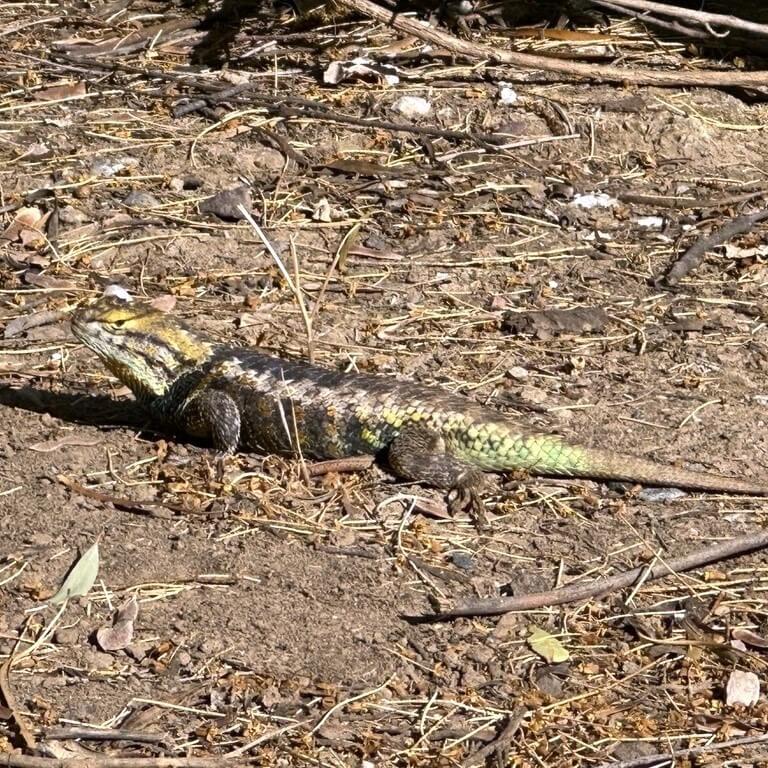
Desert Spiny Lizards have a sturdy body covered in ridged scales, with a noticeable line of spines down their back. They live in various desert environments, from rocky areas to dry riverbeds. These lizards are active during the day and often sunbathe to stay warm.
They mostly eat insects, spiders, and other small invertebrates. Desert Spiny Lizards have stretchy throat pouches they use for showing off during courtship and when defending their territory.
- Ornate Tree Lizard (Urosaurus ornatus)

Ornate Tree Lizards have a slender body with a long tail. Males often display bright blue patches on their bellies and throats during the breeding season. They are commonly found in desert scrublands, rocky areas, and near vegetation where they can climb trees and shrubs. These lizards are excellent climbers and can often be seen basking on branches or rocks.
Their diet consists mainly of insects, spiders, and other small invertebrates. Ornate Tree Lizards have specialized toe pads that allow them to grip onto surfaces while climbing.
- Western Whiptail (Aspidoscelis tigris)

Western Whiptails have long, thin bodies with a tail that looks like a whip, often with bands or stripes. They’re usually seen in desert washes, grasslands, and rocky areas. These lizards are all female and reproduce through a process called parthenogenesis.
They mostly eat insects, spiders, and other small invertebrates. Western Whiptails are incredibly quick, which helps them catch fast-moving prey and get away from predators.
Conservation Efforts of Lizards and Their Habitats
Conservation efforts for lizards and their habitats can take many forms. One way to help is by supporting organizations and conservation projects that focus on protecting lizard species and their habitats. This can include volunteering for habitat restoration projects, participating in citizen science programs to monitor lizard populations, and advocating for the protection of important lizard habitats.
Additionally, individuals can help by reducing their impact on lizard habitats through responsible outdoor recreation practices. This includes staying on designated trails and minimizing disturbance to wildlife. By taking these actions, individuals can contribute to the conservation of lizards and their habitats for future generations to enjoy.
